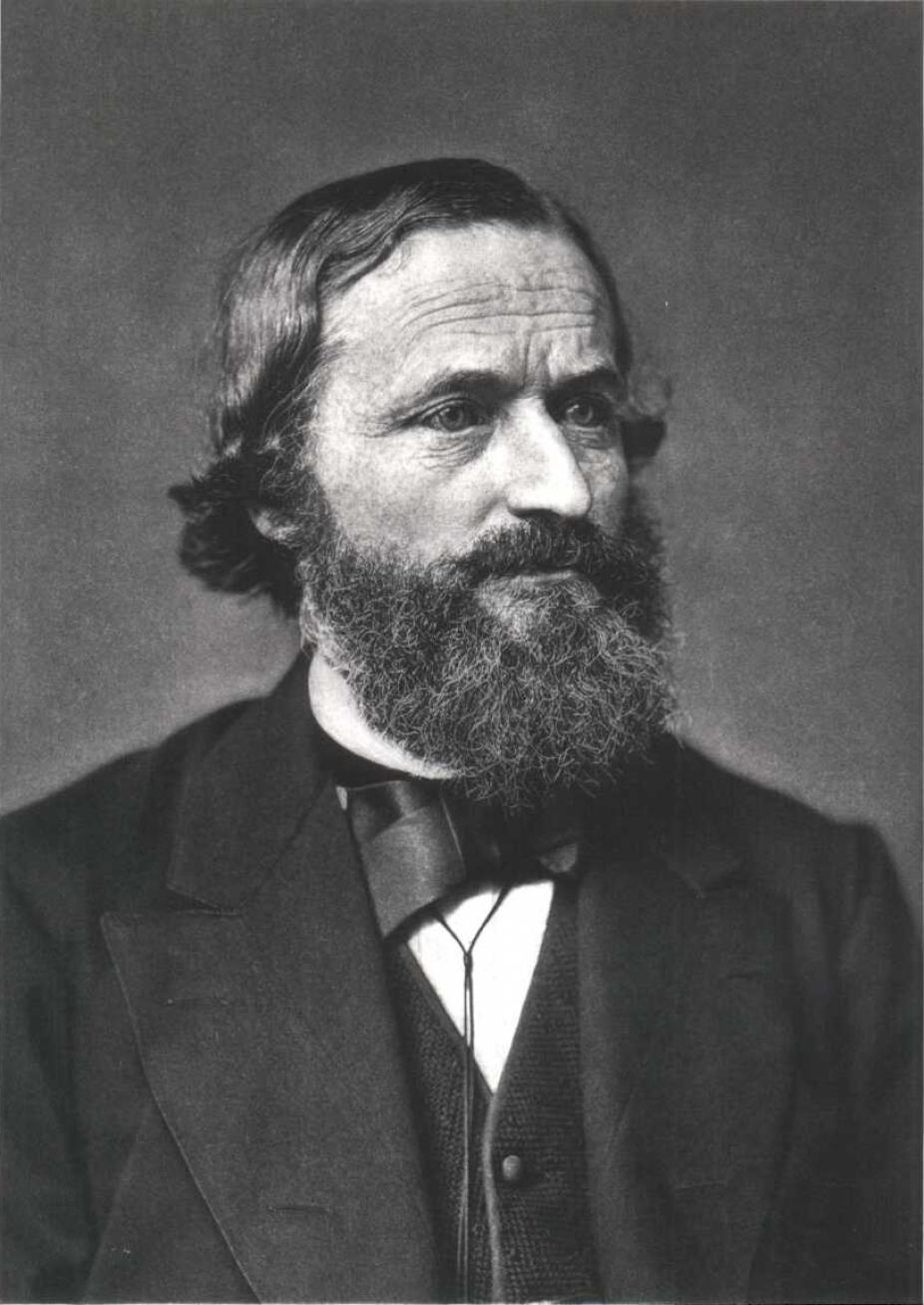Gustav Kirchhoff (1824–1887)

Portrait of Gustav Kirchhoff.
Wikipedia
Born in born Königsberg, Prussia, Gustav Kirchhoff’s most celebrated contributions to physics were in the field of spectroscopy. In collaboration with Robert Bunsen (1811-1899), Kirchhoff founded the (then purely empirical) science of spectroscopy. Kirchhoff and Bunsen began by effectively inventing the "spectroscope," a prism-based device that separated light in its primary chromatic components, its spectrum, with which they began studying the spectral qualities of various chemical elements in gaseous form.
The key observation made by Kirchhoff and Bunsen was that the spectral lines emitted by a gas occurred at the same wavelength (in modern parlance) as the absorption lines observed when incandescent light (provided by Bunsen's now famous gas burner) shone through the same gas heated at the same temperature. Kirchhoff took the gigantic leap of then identifying the dark spectral lines observed in the solar spectrum, known since Joseph Fraunhofer's earlier work, with the emission lines observed by various heated chemical substances.
In this manner Kirchhoff:
- demonstrated the existence, in the Sun, of many chemical elements isolated on Earth,
- argued that the bulk of the Sun is comprised of a hot, incandescent liquid, and
- firmly established the hot, gaseous nature of the solar atmosphere.
The latter two points led to the rapid demise of William Herschel's hypothesis of a dark, cold sun surrounded by luminous atmosphere, which Herschel had put forth on the basis of his sunspot model.
In the early 1860's Kirchhoff produced the first detailed map of the solar spectrum (ruining his eyesight in the process), while Bunsen busied himself with the spectroscopic discovery of previously unknown chemical elements (Caesium in 1860 and Rubidium in 1861). While subsequent spectroscopists improved greatly on Kirchhoff instrumental techniques, his work with Bunsen remains at the root of almost everything we know about the Sun and stars.
Bibliography
Meadows, A.J. 1970, Early Solar Physics, Pergamon Porter, R. 1994, The Biographical Dictionary of Scientists, second ed., Oxford University Press.